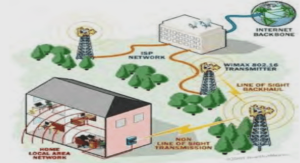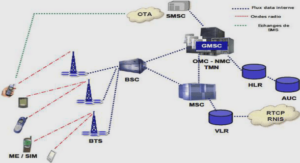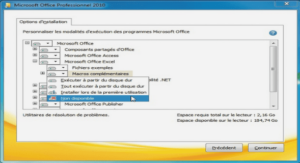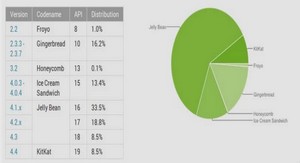1.SCOPE
2.DOCUMENT STATUS
3.REFERENCES
3.1NORMATIVE REFERENCES
3.2INFORMATIVE REFERENCES
4.DEFINITIONS AND ABBREVIATIONS
4.1DEFINITIONS
4.2ABBREVIATIONS
5.INTRODUCTION
6.PUSH MESSAGE DEFINITION
6.1MESSAGE FORMAT
6.2MESSAGE HEADERS
6.2.1 Generic Headers
6.2.1.1Age
6.2.1.2Cache-Control
6.2.1.3Content-Disposition
6.2.1.4Content-Encoding
6.2.1.5Content-Language
6.2.1.6Content-Length
6.2.1.7Content-Location
6.2.1.8Content-MD5
6.2.1.9Content-Range
6.2.1.10 Content-Type
6.2.1.11 Date
6.2.1.12 Etag
6.2.1.13 Expires
6.2.1.14 From
6.2.1.15 Last-Modified
6.2.1.16 Transfer-Encoding
6.2.1.17 Vary
6.2.2 WAP Headers
6.2.2.1X-Wap-Application-Id
6.2.2.2X-Wap-Content-URI
6.2.2.3X-Wap-Initiator-URI
6.2.3 Header Extensions
6.2.3.1WAP Header Extensions
6.2.3.2User Header Extensions
6.2.3.3Non-Normative Internet Message Headers
6.3MESSAGE BODY
7.PROXY RULES
8.STATIC CONFORMANCE REQUIREMENTS
8.1FEATURES
Scope
Wireless Application Protocol (WAP) is a result of continuous work to define an industry wide specification for developing applications that operate over wireless communication networks. The scope for the WAP Forum is to define a set of specifications to be used by service applications. The wireless market is growing very quickly and reaching new customers and providing new services. To enable operators and manufacturers to meet the challenges in advanced services, differentiation, and fast/flexible service creation, WAP defines a set of protocols in transport, session and application layers. For additional information on the WAP architecture, refer to “Wireless Application Protocol Architecture Specification” [WAP].
References
Normative References
[PushOTA] “WAP Push OTA Protocol”, WAP Forum, 08-Nov-1999.
URL: http://www.wapforum.org
[PushPAP] « WAP Push Access Protocol », WAP Forum, 08-Nov-1999.
URL: http://www.wapforum.org
[RFC822] » Standard for the Format of ARPA Internet Text Messages », D. Crocker, August 1982,
URL: http://www.ietf.org/rfc /rfc822
[HTTP] “Hypertext Transfer Protocol – HTTP/1.1”, R. Fielding, et al. June 1999
URL: http://www.ietf.org/rfc/rfc2616.txt
[WINA] « WAP Interim Naming Authority », WAP Forum,
URL:http://www.wapforum.org/wina/
Informative References
[WAE] « Wireless Application Environment Specification », WAP Forum, 04-Nov-1999.
URL: http://www.wapforum.org
[WAP] “Wireless Application Protocol Architecture Specification”, WAP Forum, 30-Apr-1998. URL:
http://www.wapforum.org
[WSP] « Wireless Session Protocol », WAP Forum, 05-Nov-1999.
URL: http://www.wapforum.org
Definitions and Abbreviations
Definitions
The following are terms and conventions used throughout this specification.
The key words “MUST”, “MUST NOT”, “REQUIRED”, “SHALL”, “SHALL NOT”, “SHOULD”, “SHOULD NOT”, “RECOMMENDED”, “MAY”, and “OPTIONAL” in this document are to be interpreted as described by [RFC2119].
Application – A value-added data service provided to a WAP Client. The application may utilise both push and pull data transfer to deliver content
Application-Level Addressing – the ability to address push content between a particular user agent on a WAP client and push initiator on a server.
Bearer Network – a network used to carry the messages of a transport-layer protocol between physical devices.
Multiple bearer networks may be used over the life of a single push session.
Client – in the context of push, a client is a device (or service) that expects to receive push content from a server. In the context of pull a client, it is a device initiates a request to a server for content or data. See also “device”.Contact Point – address information that describes how to reach a push proxy gateway, including transport protocol addres and port of the push proxy gateway.
Abbreviations
For the purposes of this specification, the following abbreviations apply.
CPI Capability and Preference Information
DNS Domain Name Server
DTD Document Type Definition
HTTP Hypertext Transfer Protocol
IANA Internet Assigned Numbers Authority
IP Internet Protocol
OTA Over The Air
PAP Push Access Protocol
PI Push Initiator
PPG Push Proxy Gateway
QOS Quality of Service
RDF Resource Description Framework
RFC Request For Comments
SGML Standard Generalized Markup Language
SI Service Indication
SIA Session Initiation Application
SIR Session Initiation Request
SL Service Loading
SSL Secure Socket Layer
TLS Transport Layer Security
URI Uniform Resource Identifier
URL Uniform Resource Locator
UTC Universal Time Co-ordinated
WAP Wireless Application Protocol
WDP Wireless Datagram Protocol
WSP Wireless Session Protocol
WBXML WAP Binary XML
WINA WAP Interim Naming Authority
WTLS Wireless Transport Layer Security
XML Extensible Mark-up Language
Introduction
The architecture consists of a distributed client/server application, with a server residing in the push proxy gateway (PPG) or a push initiator (PI), and a client residing in the mobile device. It is the push initiator that initially intends to send a push message to the client. The push initiator typically first sends the message by using the Push Access Protocol (PAP) [PushPAP] to the PPG through the wired network and the PPG sends the message by using the Push OTA Protocol [PushOTA] over the wireless network.
Push Message Definition
Message Format
A push message contains headers and a body. It uses the generic message format of RFC 822 [RFC822] for transferring textual entities, but allows binary message bodies. The message consist of zero or more headers, an empty line (i.e., a line with nothing preceding the CRLF) indicating the end of the header fields, and an optional message body.
The message headers are defined in 6.2. The message body is defined in 6.3.
Message Headers
Generic Headers
The message headers in this category are based on the Internet message headers in common use. These headers are defined in [HTTP]. The push message is equivalent to a response message in HTTP 1.1 when the semantics of each HTTP header is examined.
…….
Cours réseaux informatiques (125 KO) (Cours PDF)




